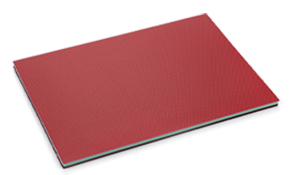9 月 . 25, 2024 20:16 Back to list
basketball court floor installation
Installation of Basketball Court Floors A Comprehensive Guide
When it comes to installing a basketball court floor, there are multiple factors to consider to ensure top performance and longevity. Whether you're building a court for a school, community center, or your home, the choice of flooring and its installation process can significantly impact the players' experience and safety.
Choosing the Right Flooring Material
The first step in the installation process is selecting an appropriate flooring material. The two most common options for basketball courts are hardwood and synthetic surfaces. Hardwood floors, typically made from maple, are the traditional choice for indoor courts. They provide excellent traction, shock absorption, and a classic aesthetic. However, hardwood requires more maintenance and can be expensive.
On the other hand, synthetic surfaces, such as rubber or vinyl, offer a more versatile and lower-maintenance option. They are often used in outdoor courts but can be used indoors as well. Synthetic materials are resistant to moisture and can withstand temperature fluctuations, making them ideal for a variety of environments.
Preparing the Subfloor
Proper preparation of the subfloor is crucial for a successful basketball court installation. The subfloor must be clean, dry, and level to ensure that the basketball flooring adheres correctly and functions as intended. If the subfloor is made of concrete, it may require additional treatment, such as grinding or leveling, to achieve a smooth surface.
In some cases, a cushioning layer can be installed under the flooring material to provide extra shock absorption and improve player safety
. This is particularly important for hardwood floors, which can be hard and unforgiving over time.Installation Process
basketball court floor installation

Once the materials are selected and the subfloor is prepared, the installation process can begin. For hardwood surfaces, the planks are usually laid out in a specific pattern, often utilizing tongue-and-groove edges for seamless installation. It's essential to leave an appropriate expansion gap around the edges, as wood can expand and contract with humidity changes.
For synthetic surfaces, installation typically involves rolling out the material and securing it with adhesive. Depending on the type of synthetic floor, seams may need to be treated with heat or adhesive to prevent lifting or movement.
Finishing Touches
After the flooring is installed, the final touches can be added. This includes applying a finish or sealant to hardwood floors for protection against wear and tear. For synthetic surfaces, line markings for the basketball court must be added. These lines are crucial for gameplay and should be precise and durable.
Lastly, it’s recommended to allow the flooring to cure before heavy use. This ensures that adhesives and finishes set properly, contributing to the overall durability of the surface.
Maintenance and Care
Maintaining a basketball court floor is essential for its longevity. For hardwood, regular cleaning with special wood cleaners and periodic refinishing will keep it looking great and performing well. Synthetic surfaces require routine cleaning and assessments for any damage that could affect player safety.
In conclusion, installing a basketball court floor is a detailed process that involves careful planning, material selection, and proper installation techniques. With the right approach, the result will be a high-quality court that meets the needs of players and enhances the overall basketball experience. Whether opting for hardwood or synthetic surfaces, ensuring a great installation will provide years of enjoyment and competition.
-
Custom Pickleball Court Solutions Convert Tennis & Indoor Builds
NewsMay.30,2025
-
Outdoor Pickleball Court Costs Build & Install Pricing Guide
NewsMay.30,2025
-
Premium Pickleball Sports Courts Custom Design & Installation
NewsMay.30,2025
-
Indoor Pickleball Courts Tennis Court Conversion & Custom Builds Tempe
NewsMay.29,2025
-
Professional Pickleball Court Installation & Tennis Court Conversions
NewsMay.29,2025
-
Grey Synthetic surface-rubber prefabricated track
NewsMar.07,2025

